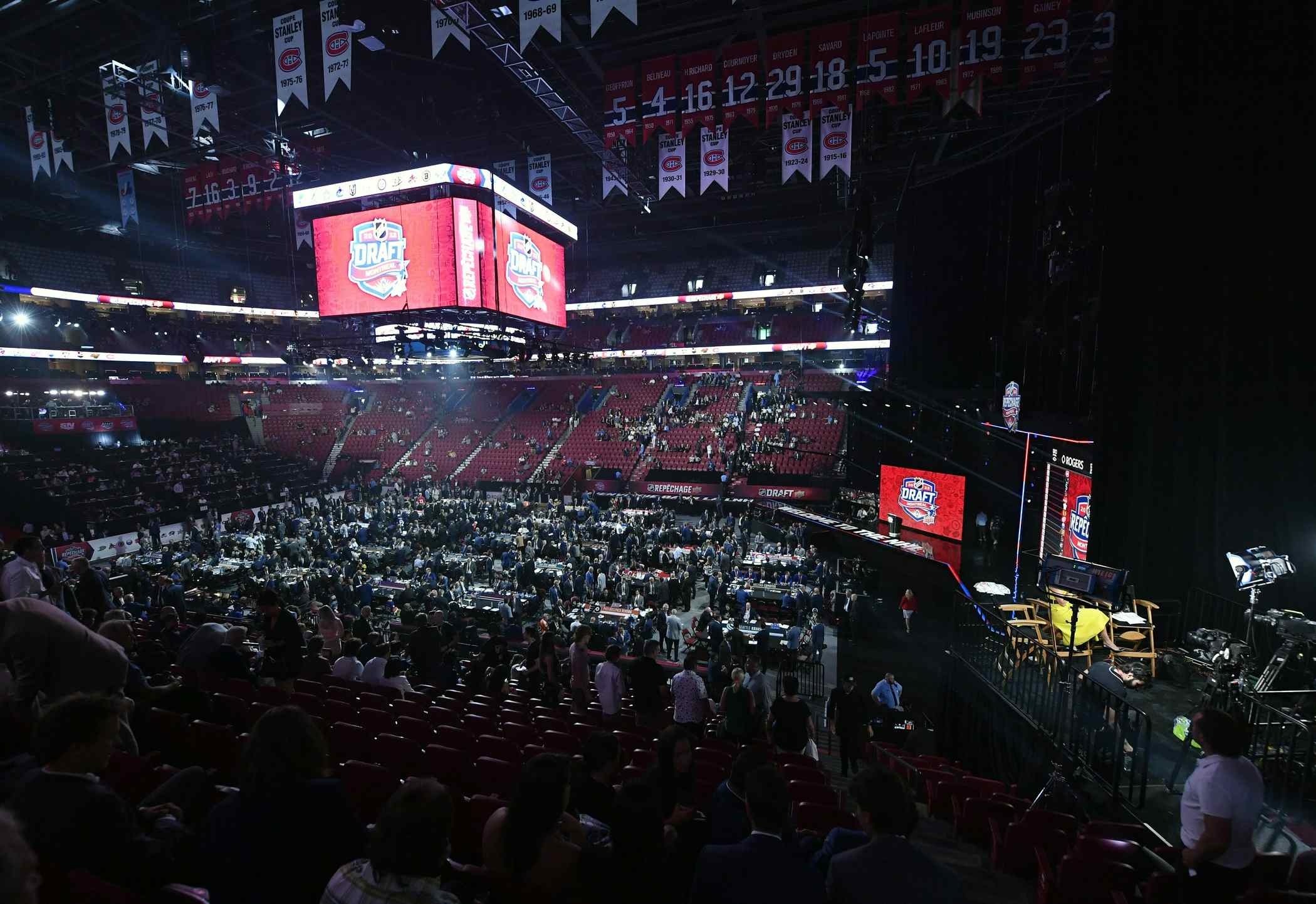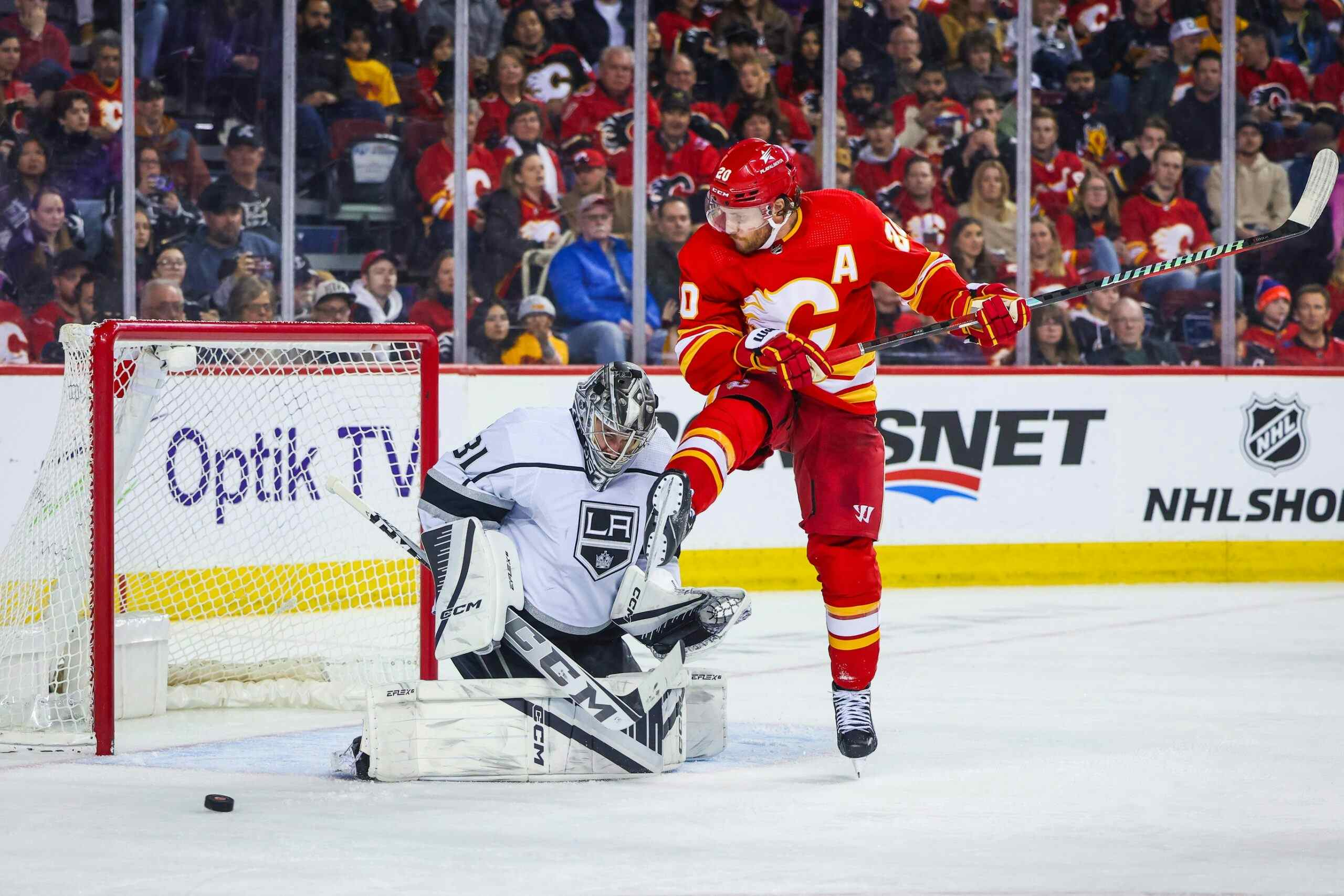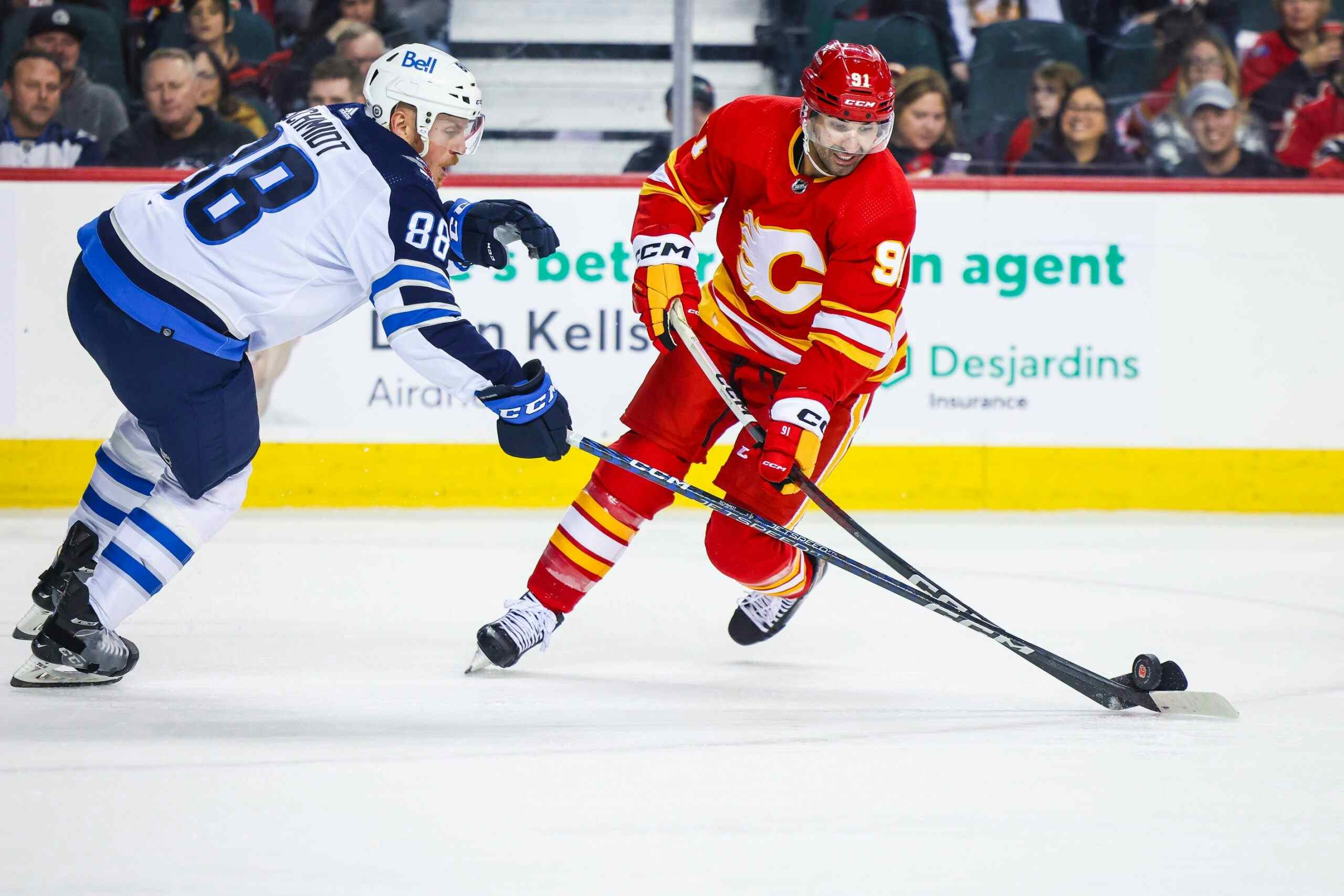Flames Scoring Chances 2009-10 – Broad Strokes
By Kent Wilson
13 years agoBoth Pat Steinberg and Robert Cleave have made reference to Flames scoring chances recently. For those unaware, I took it upon myself to count scoring chances* last season and managed to tally 72 of Calgary’s 82 games, with the results of each individual contest documented here. My efforts were part of a larger project shared by a number of bloggers around the net and will likely continue and expand going forward.
*(a scoring chance was defined as a shot directed at the net from the prime scoring area extending from the crease, inside the face-off dots to about the top of the face-off circles. Goals were also counted as scoring chances. Shots blocked close to source were excluded. Purposeful tips and defelctions were included as chances with caveats.
What I didn’t count were "chances at chances". For example, a player gets a break away but trips over the blueline and fails to get a shot. Or a guy makes a cross crease pass, but the puck bounces over the recipients stick and he fails to get a shot.)
Scoring chances provide a nice basis for analysis in both micro and macro terms. After individual periods and games, I found the act of having to specifically observe and count chances for/against really sharpened my awareness of what was going in the game. Here’s an example from Game 80:
Ray Ferraro made a comment tonight that stood out to me. It was, verbatim:
"When you have a talented team you need just a few chances. When you’re a team that has to work so hard for your goals, you need so many chances because you don’t have a natural scorer."
This was said at the start of the third period with the Flames ahead on the shot clock by 2, but behind on the scoreboard by the same count. The funny thing is the reality was the exact opposite: San Jose had grossly outchanced the Flames to that point in the game, including a 7-1 trouncing in the second period. I don’t necessarily blame Ferraro for making this "observation" – the Sharks hadn’t spent long stretches of time dominating. In fact, the teams frequently exchanged rushes during the game. The difference was, the Sharks were getting their shots from scoring areas. The Flames weren’t. If I hadn’t been counting things, I may have made the same comment.
That wasn’t always true, of course – often, the outshooting team is in fact the outchancing team, so Ferraro can be forgiven for his mistake. That said, I only really caught on to it because I was counting the chances for and against.
In broad terms, tallying scoring chances also gives us a new data set to work with at the end of the year. Once things were over, we were able to compile the various games and look at totals and trends for each individual player, which is what Pat and Bob have been using in their analysis recently.
We can also look at how scoring chances relate to possession. More spefically, corsi (shots at the net for and against). Here is even strength scoring chance % versus corsi % for the Flames primary skaters last year (in the 72 games I counted):

The relationship is obvious enough. The lone major outlier in the bottom right corner is Mikael Backlund, who had decent possession stats but a lousy scoring chance differential in his 23 games. That’s likey an artifact of sample size (he played all of 261 ES minutes) and we can be fairly certain the two numbers would grow more in lockstep the more he played.
Here’s the raw data for anyone interested, sorted from the best to worst SC ratio:

– Yup, that’s Nigel Dawes leading the SC parade. Seriously. And Kotalik is second (!!). Of course, I think we can safely say playing with Bourque and Langkow (both of whom are also near the top of the heap) helped these two guys a bunch.
– I mostly eliminated players who didn’t appear in enough games for their numbers to be meaningful. Kronwall (number 8) probably could have been dumped as well.
– Always keep in mind context when looking at numbers like these. Adam Pardy has great possession and scoring chance stats, but he started in the offensive zone a lot (55% zonestart) and played against nobodies.
– Because of the nature of the programs used to compile this information, Ian White/Dion Phaneuf as well as Olli Jokinen/Chris Higgins’ data were mashed together because those sets of players shared the same numbers (3 and 21) after their respective trades. So take their results with a big grain of salt.
– Again, keep in mind this ES only. We have the numbers for the special teams and may be persuaded to look at them in detail should there prove to be demand for that information.
The graph also illustrates why some others and I concern ourselves with possesion stats like corsi. The correlation between corsi % and scoring chance % was 0.64 in this sample and I’m confident it would be higher than that if I had been able to count all 82 games and include them in the analysis.
More looks at individual and pairing scoring chance results are upcoming.
Stay tuned.
Recent articles from Kent Wilson






